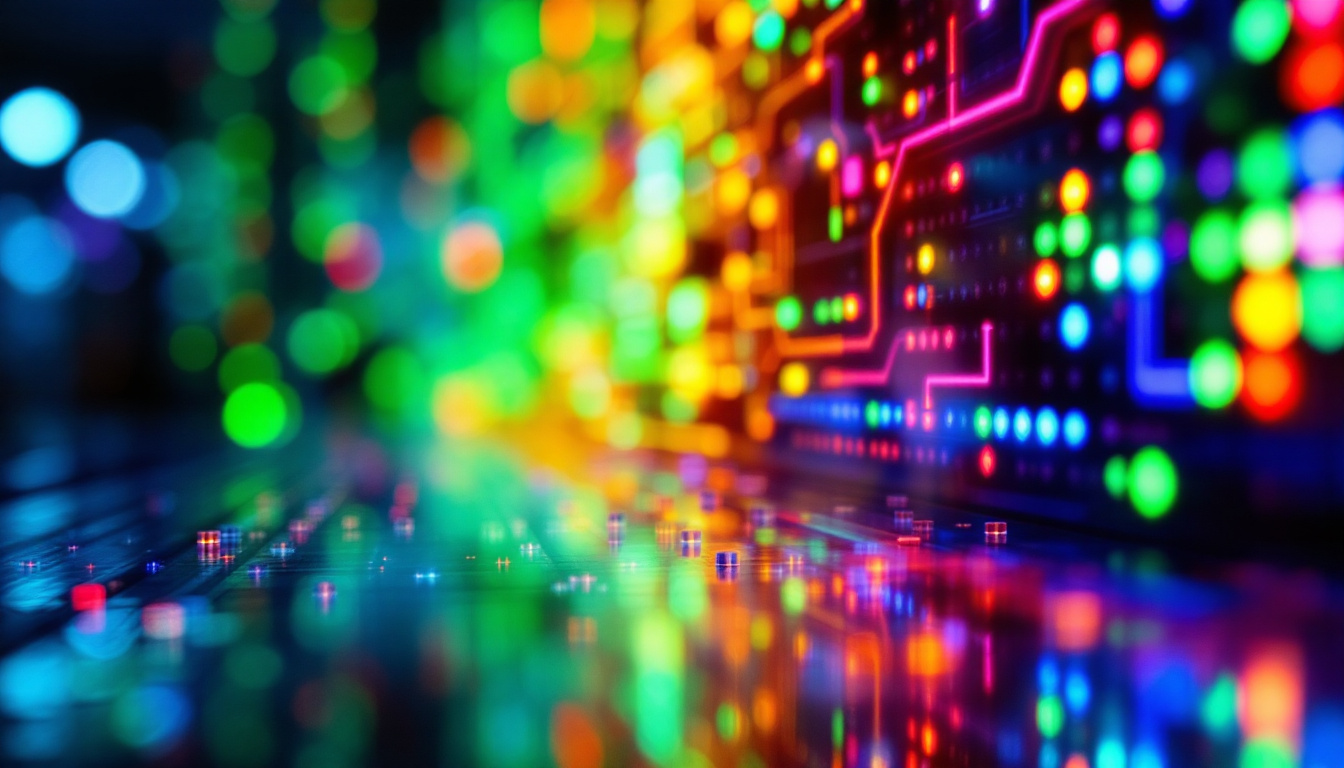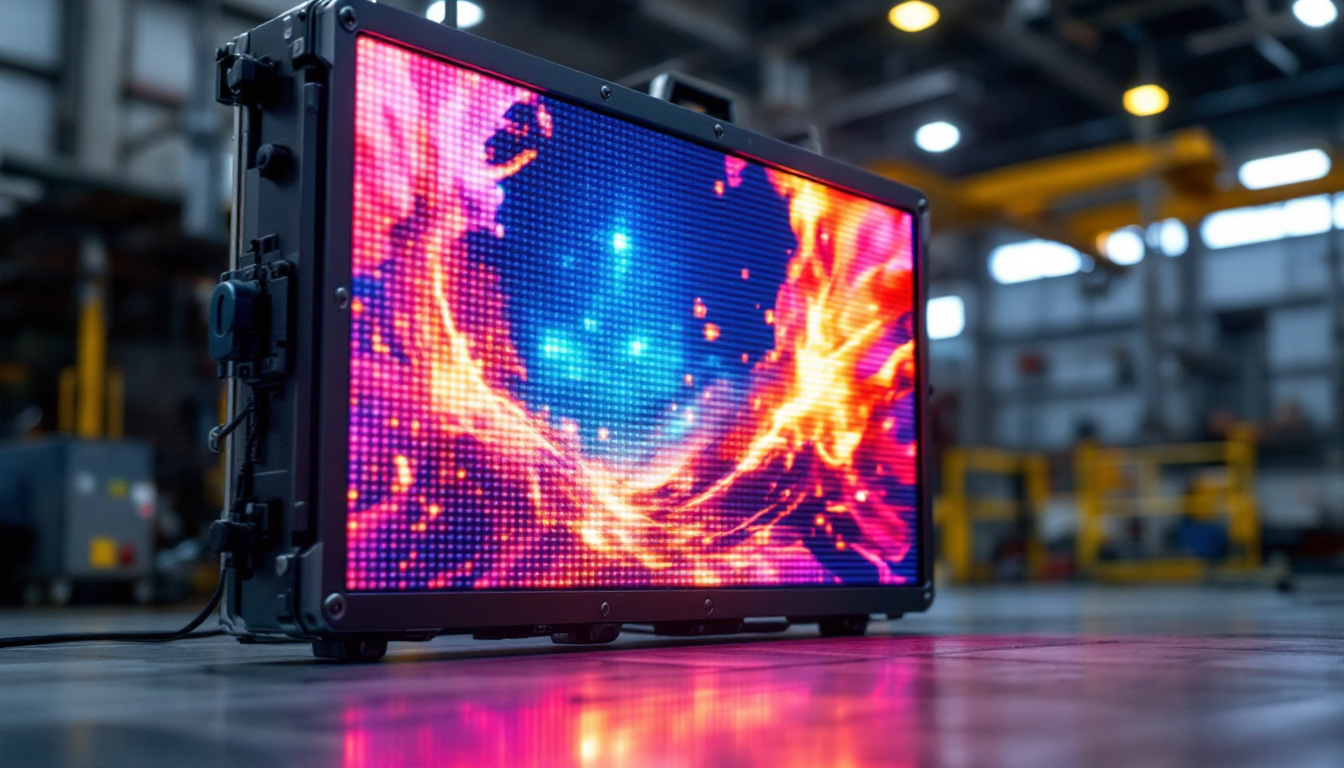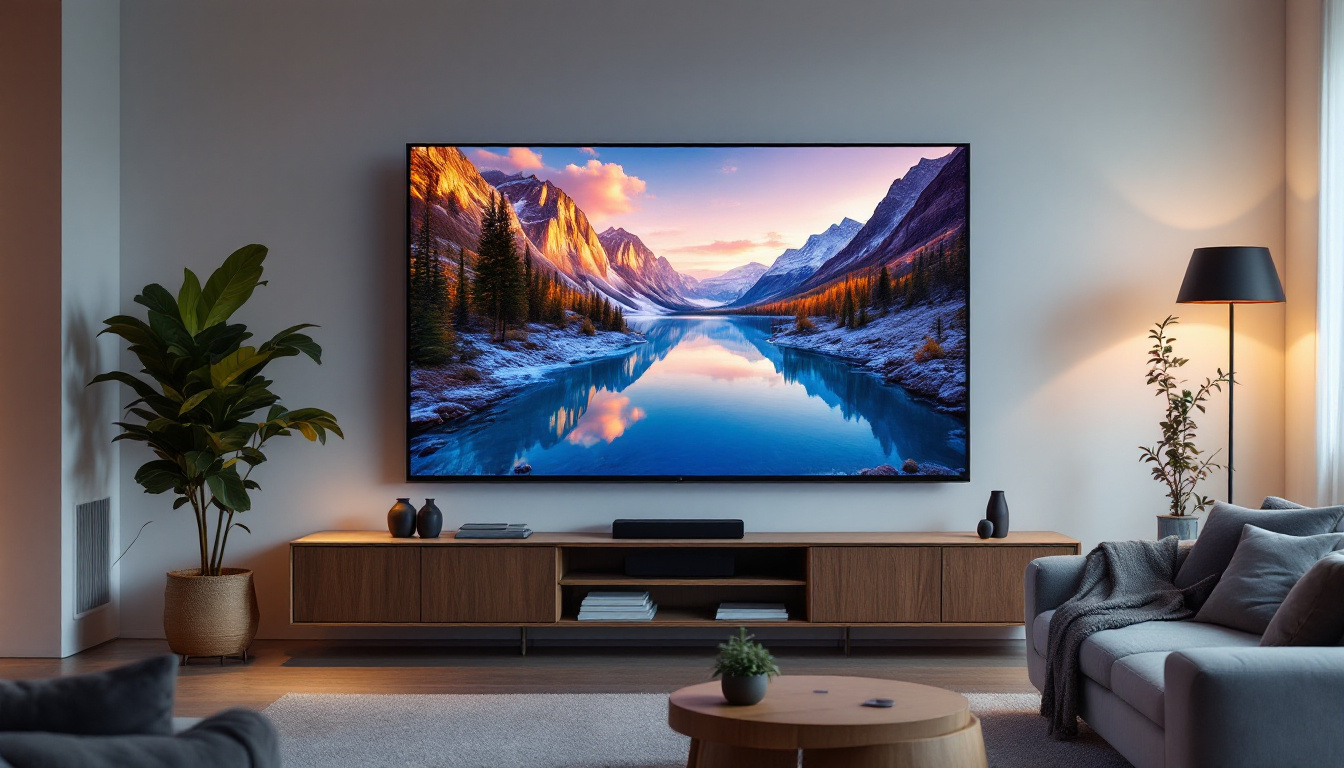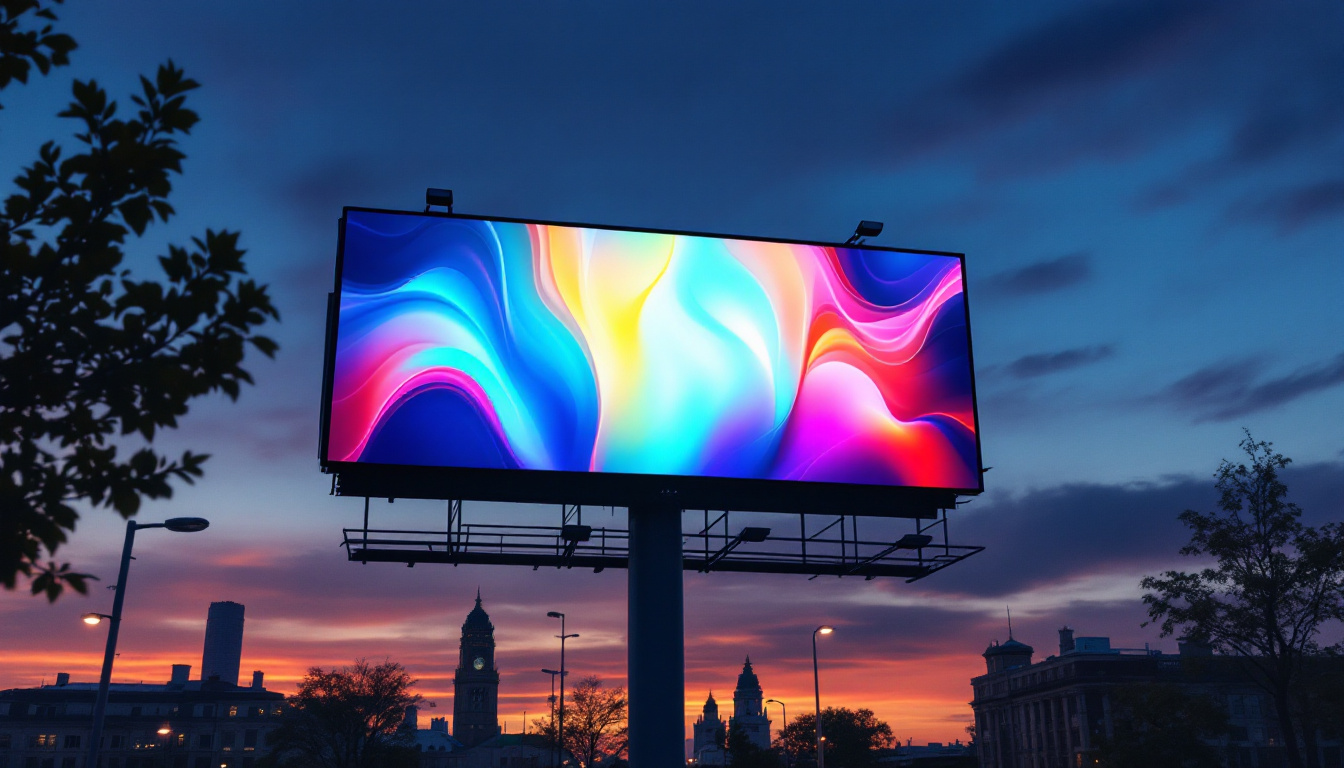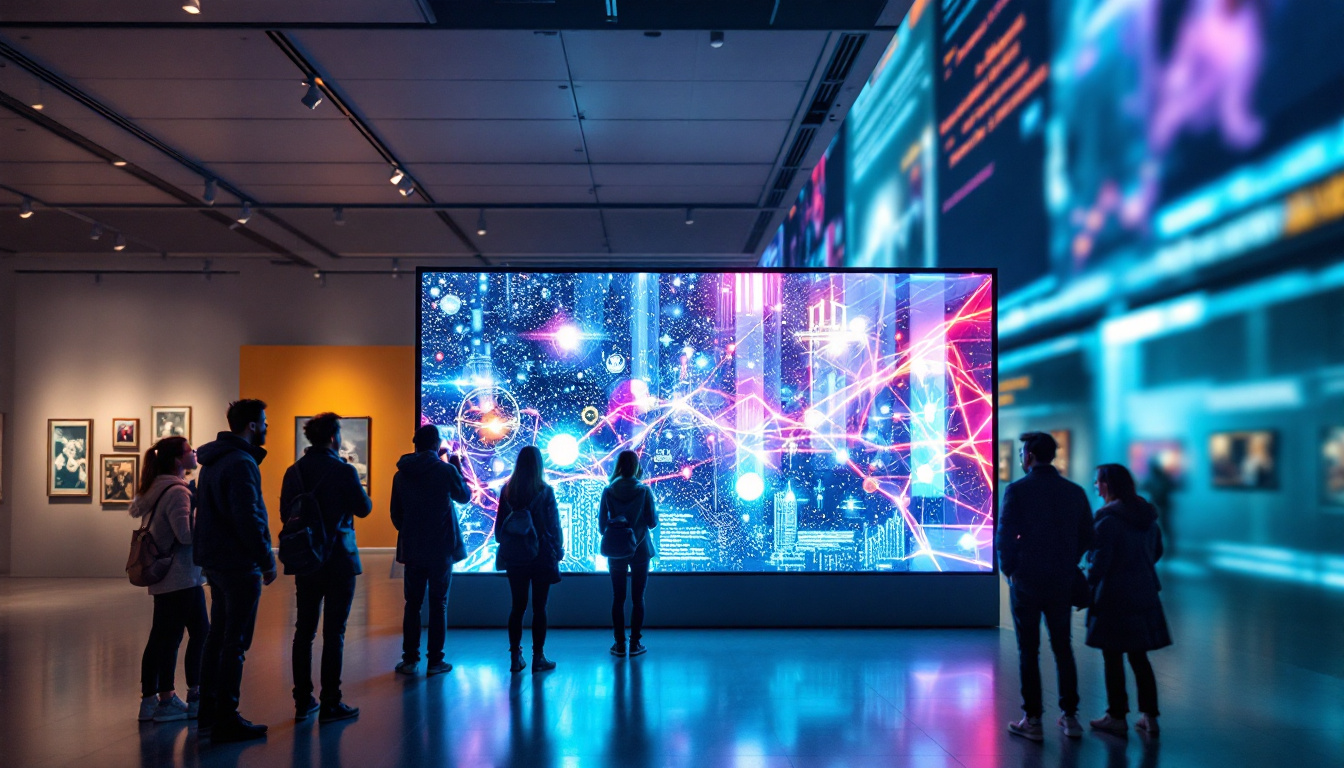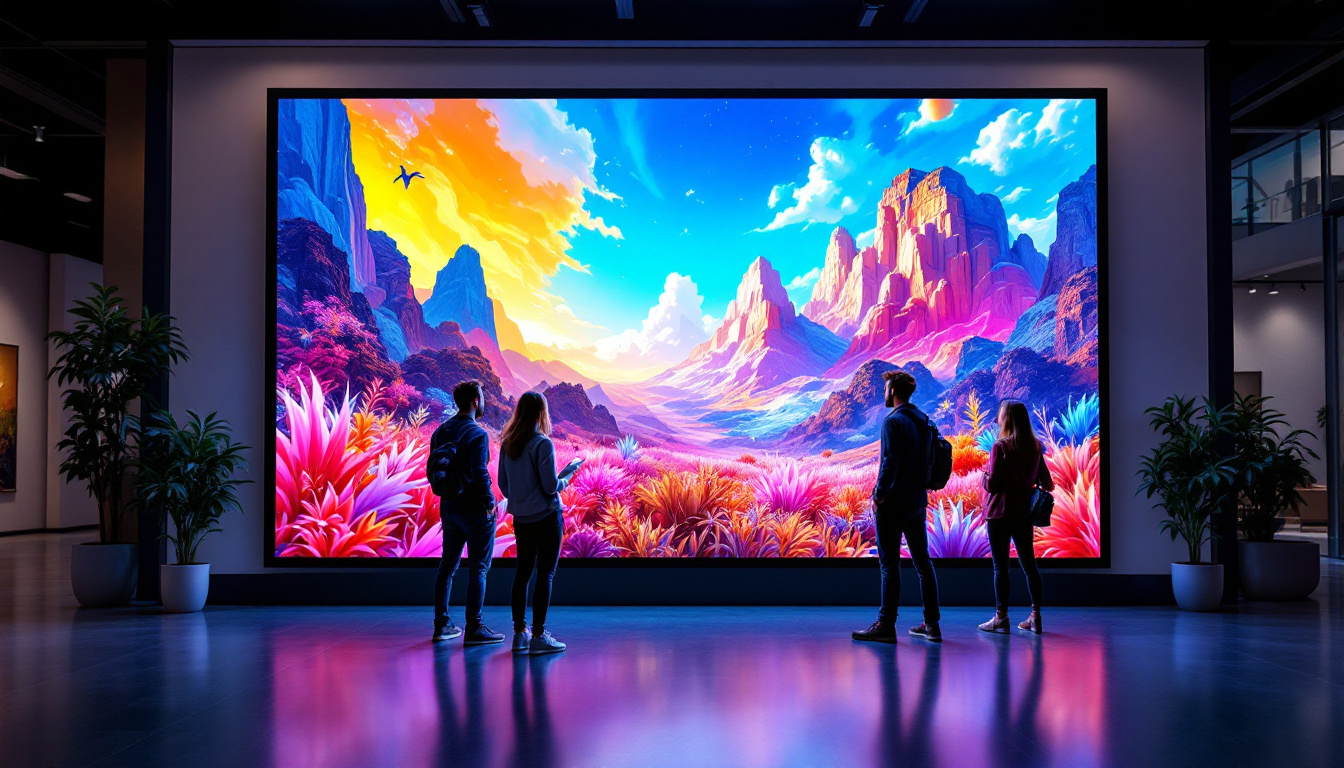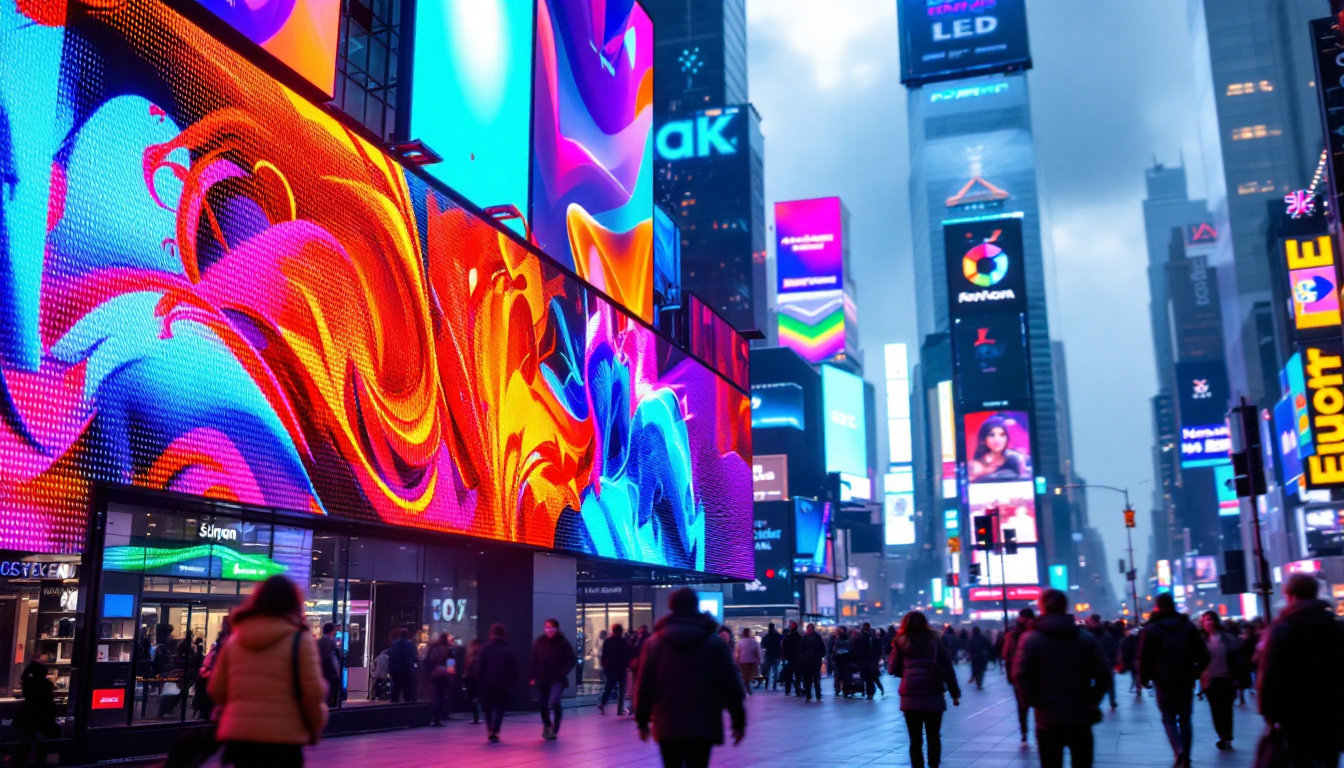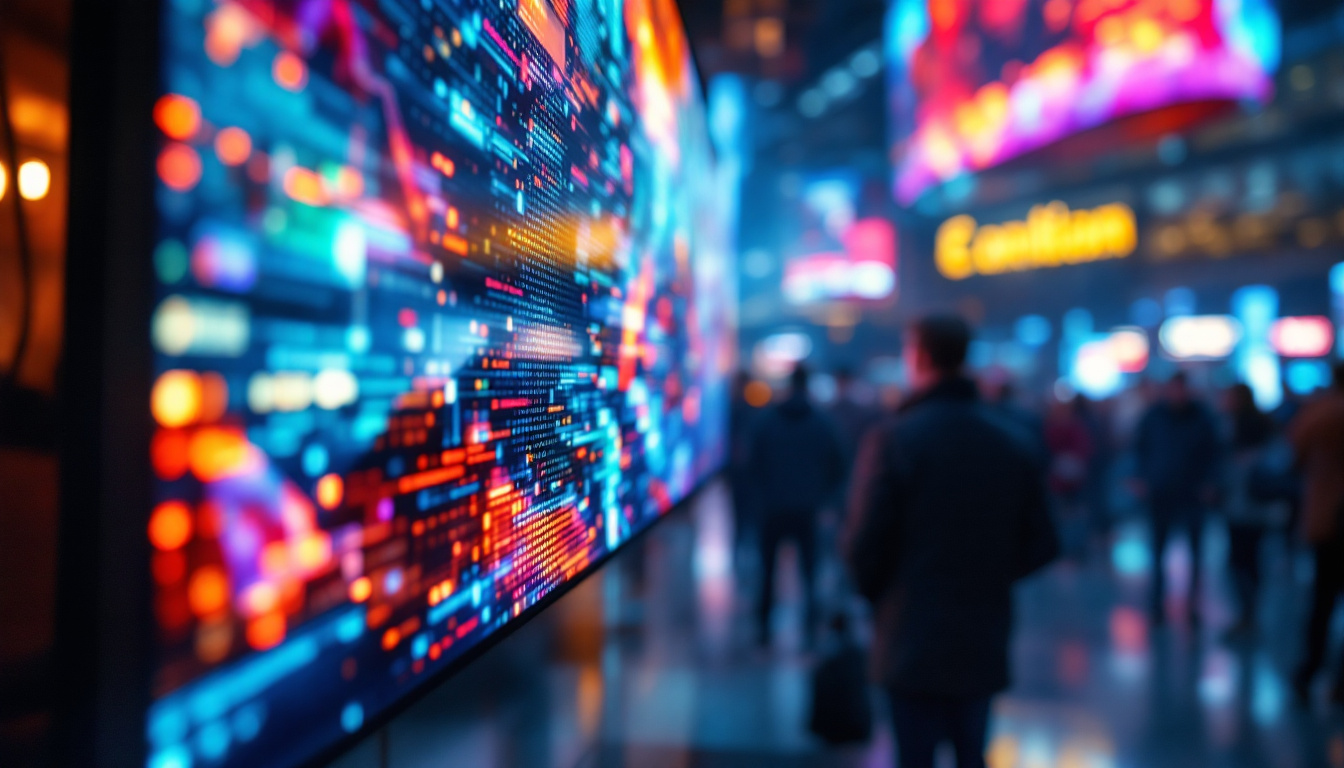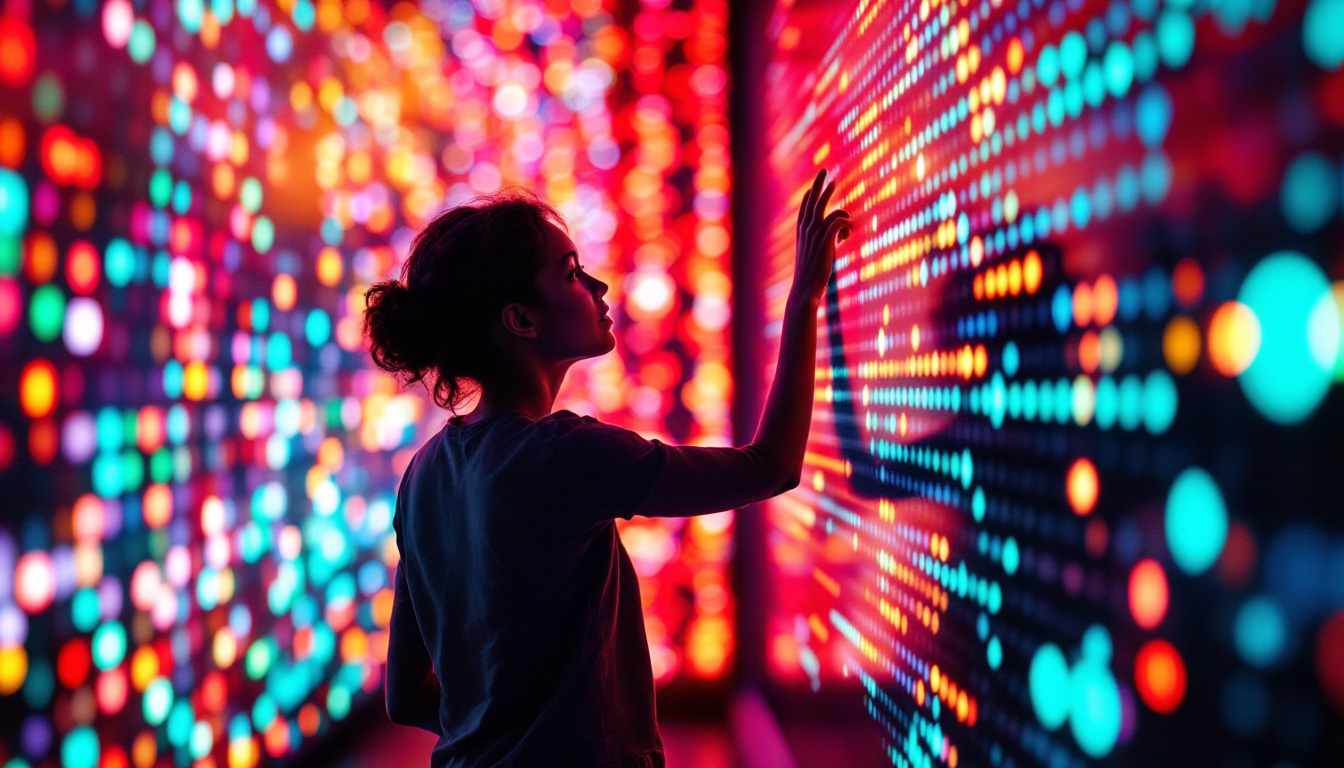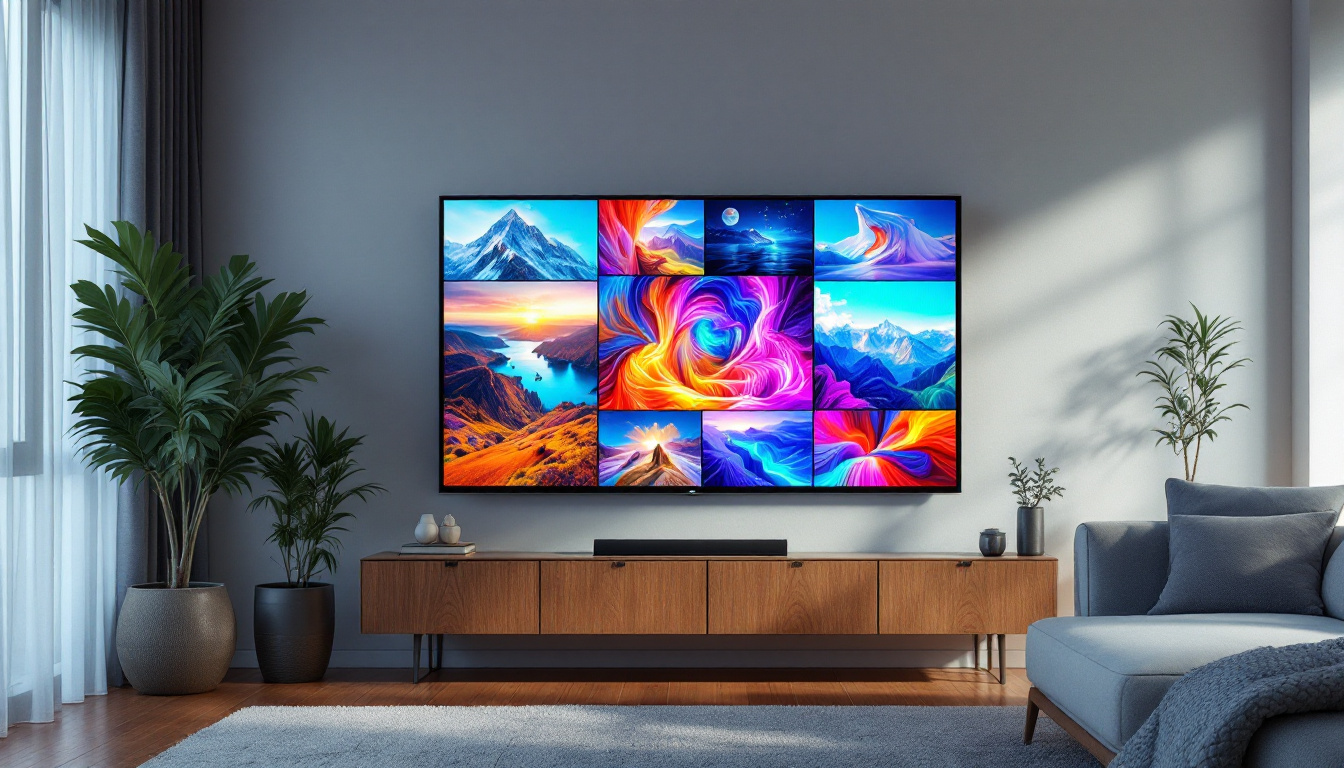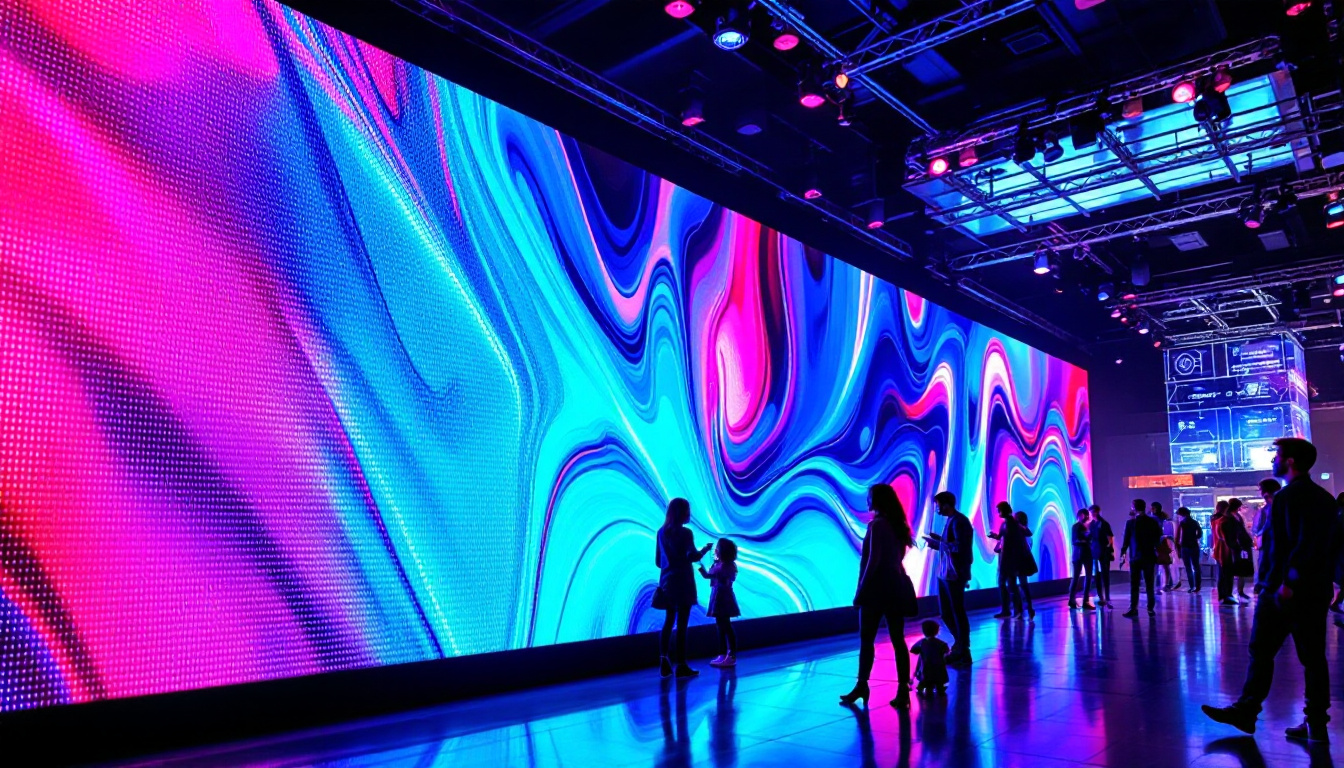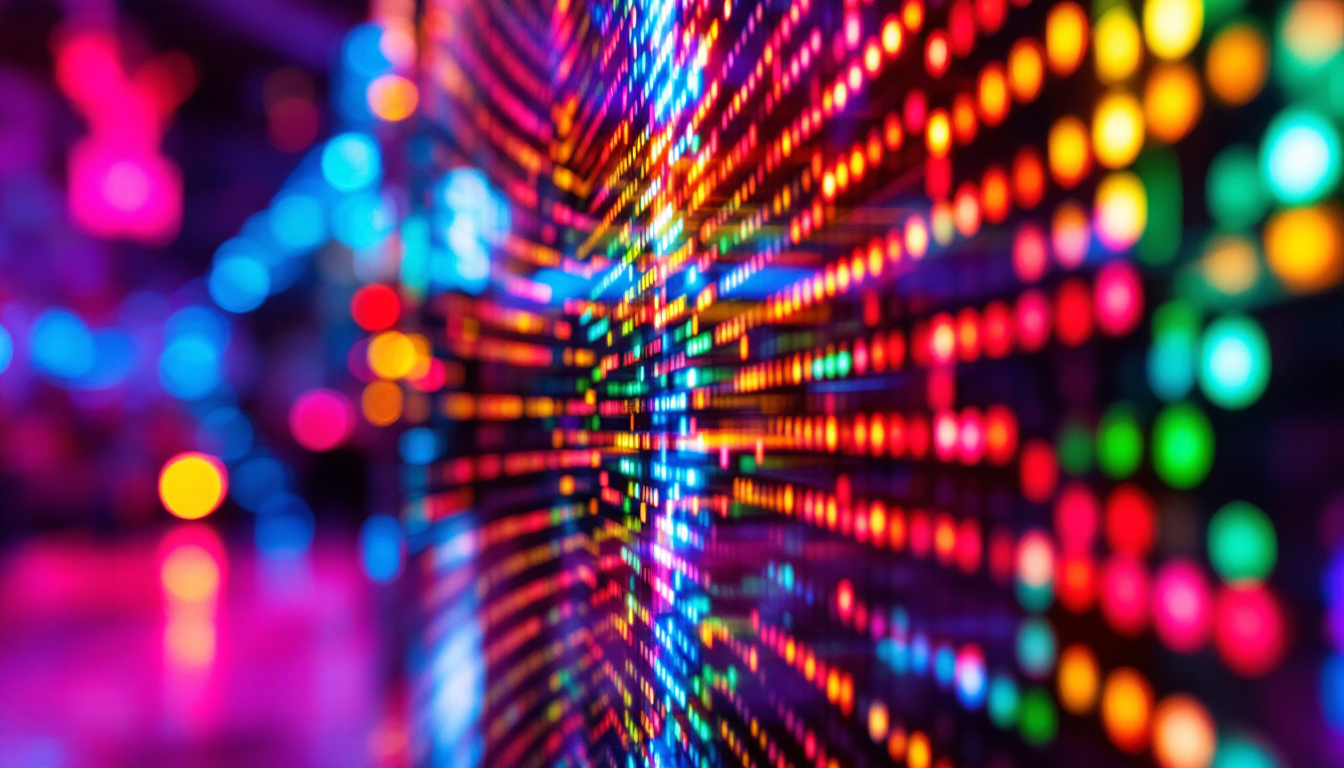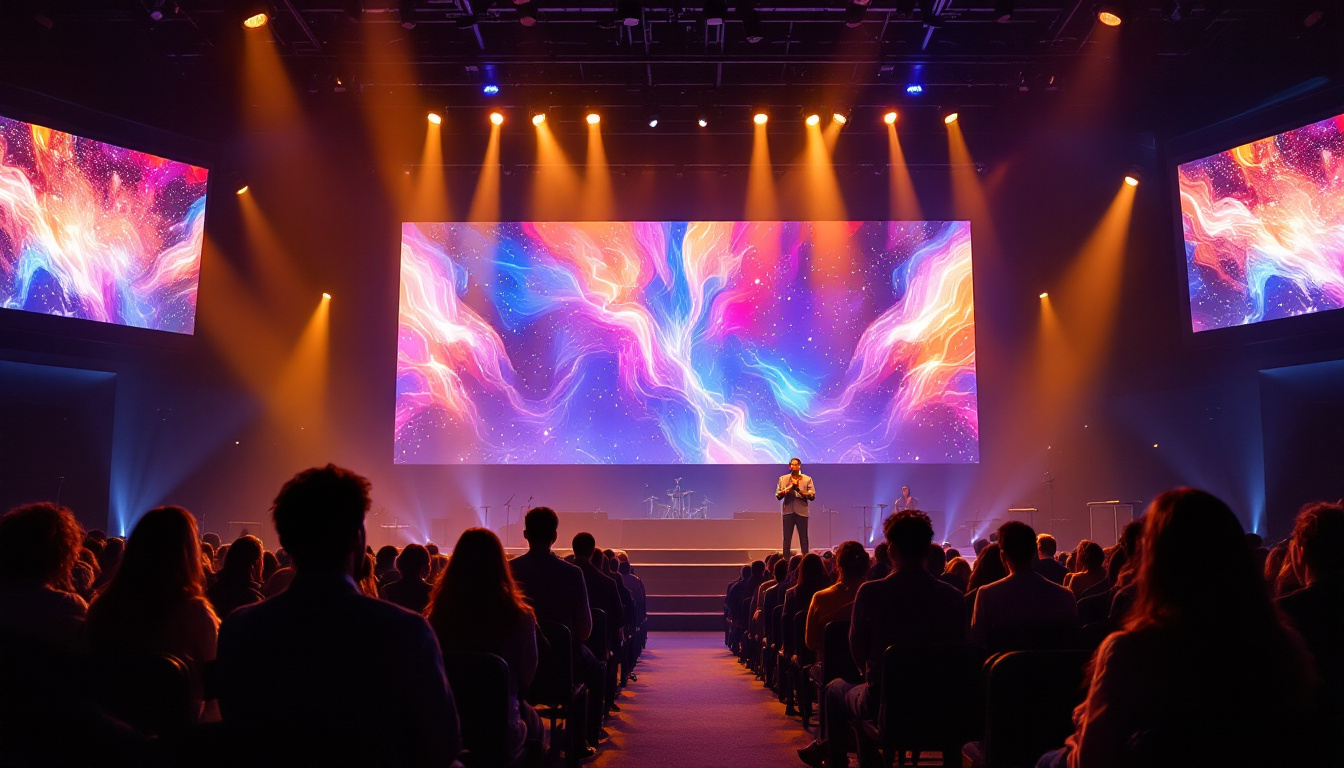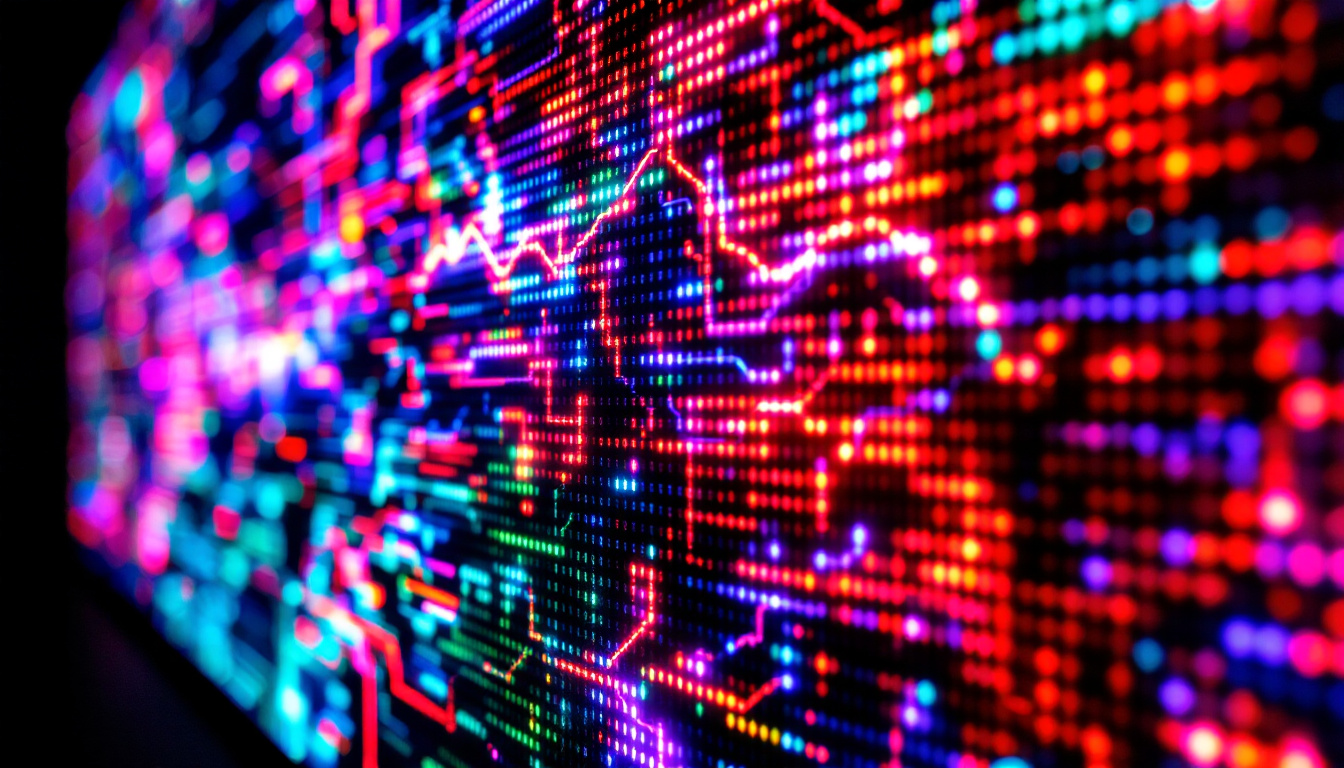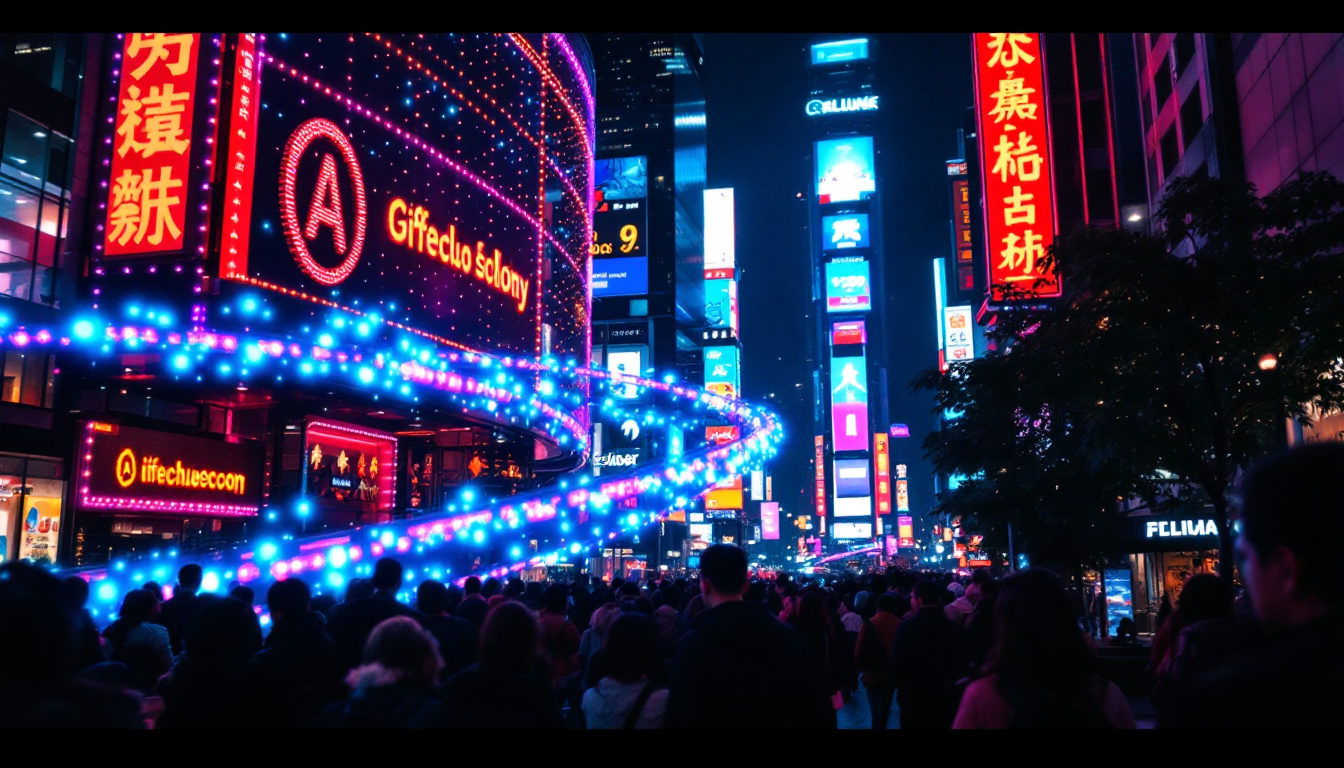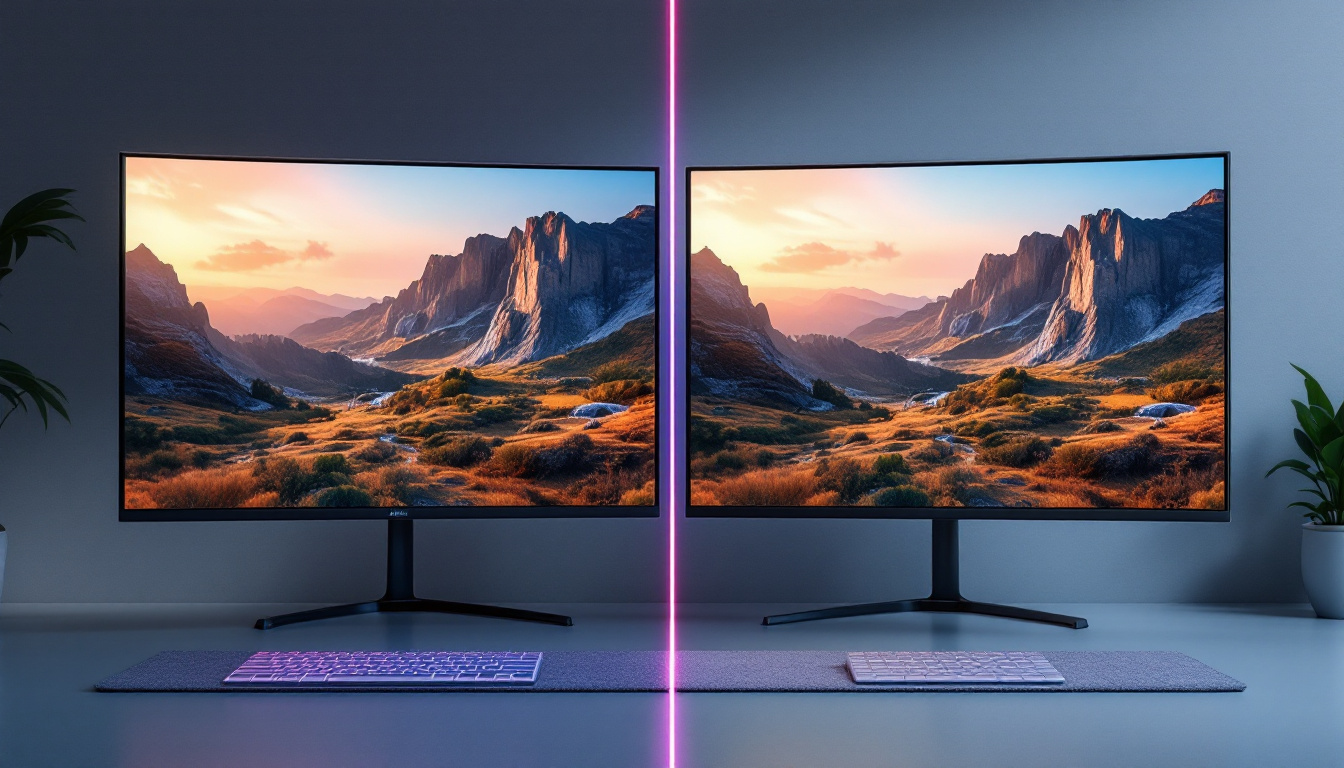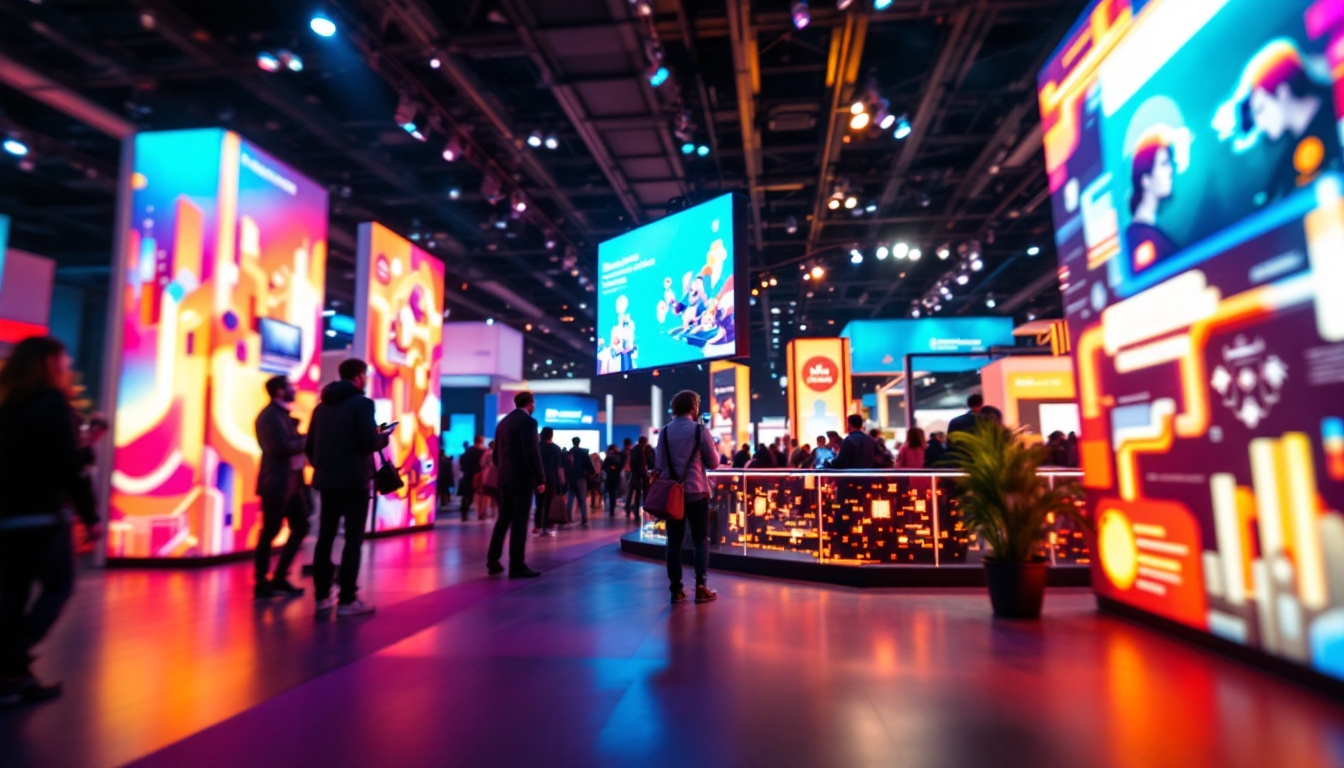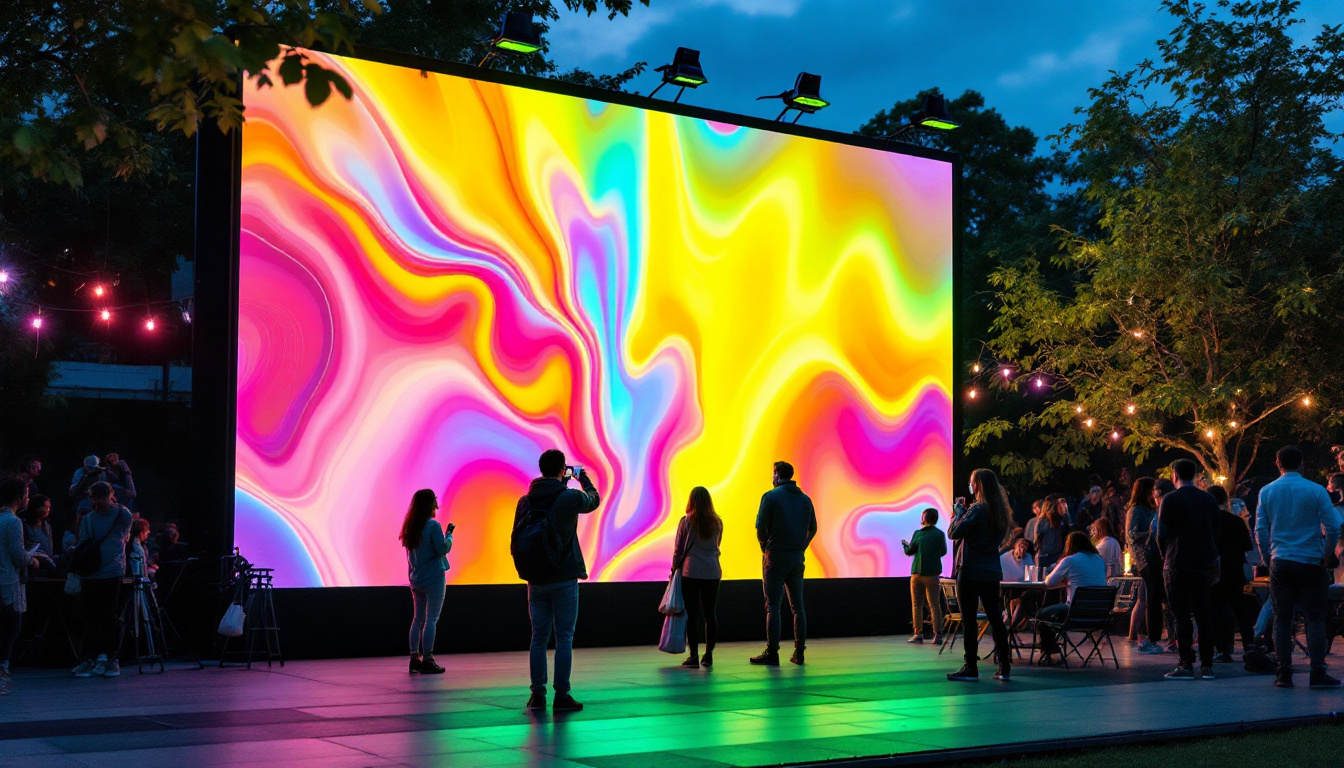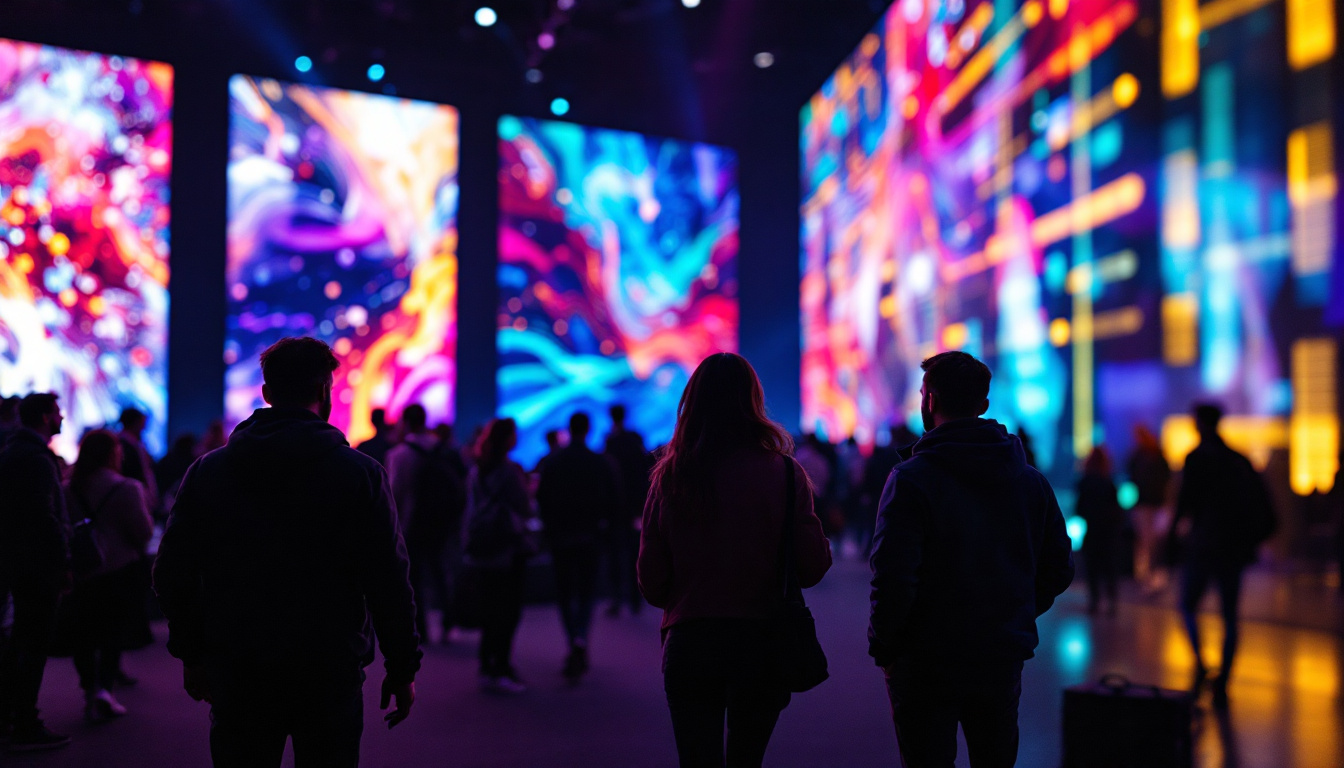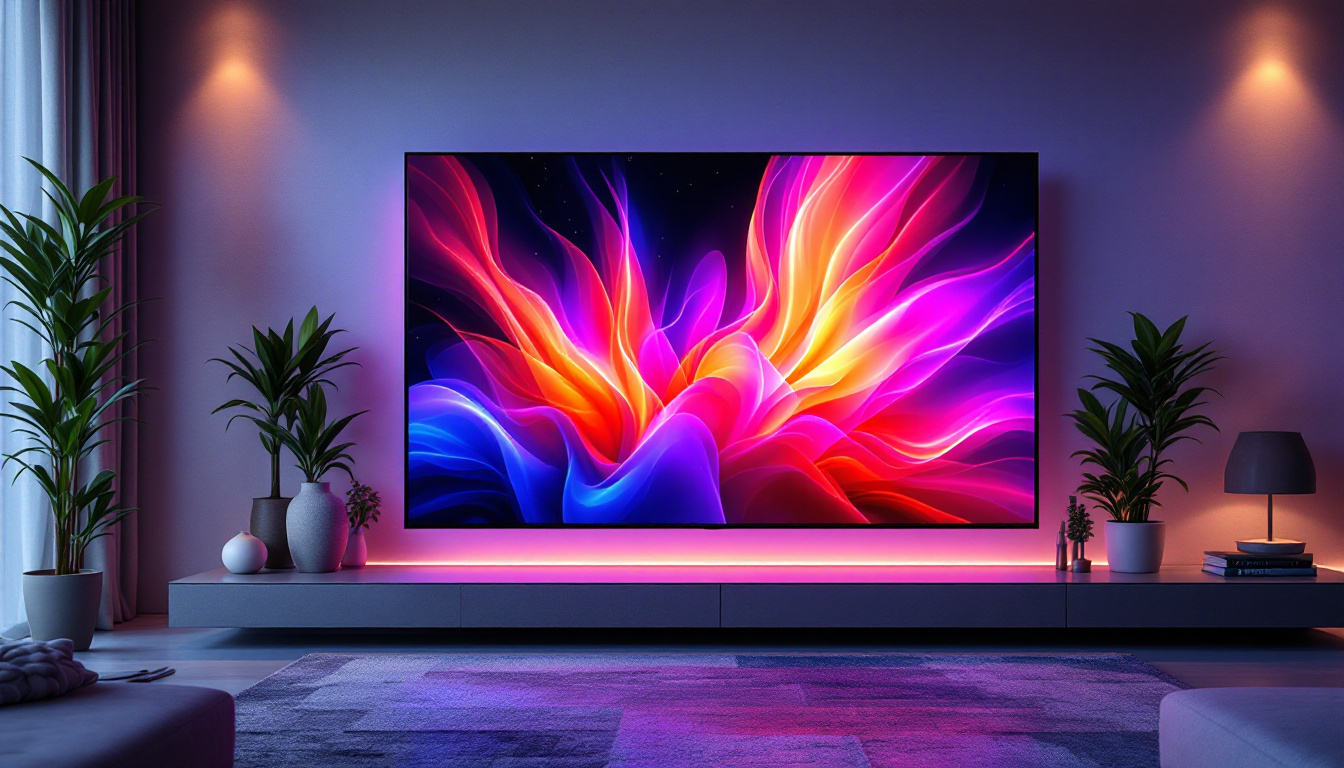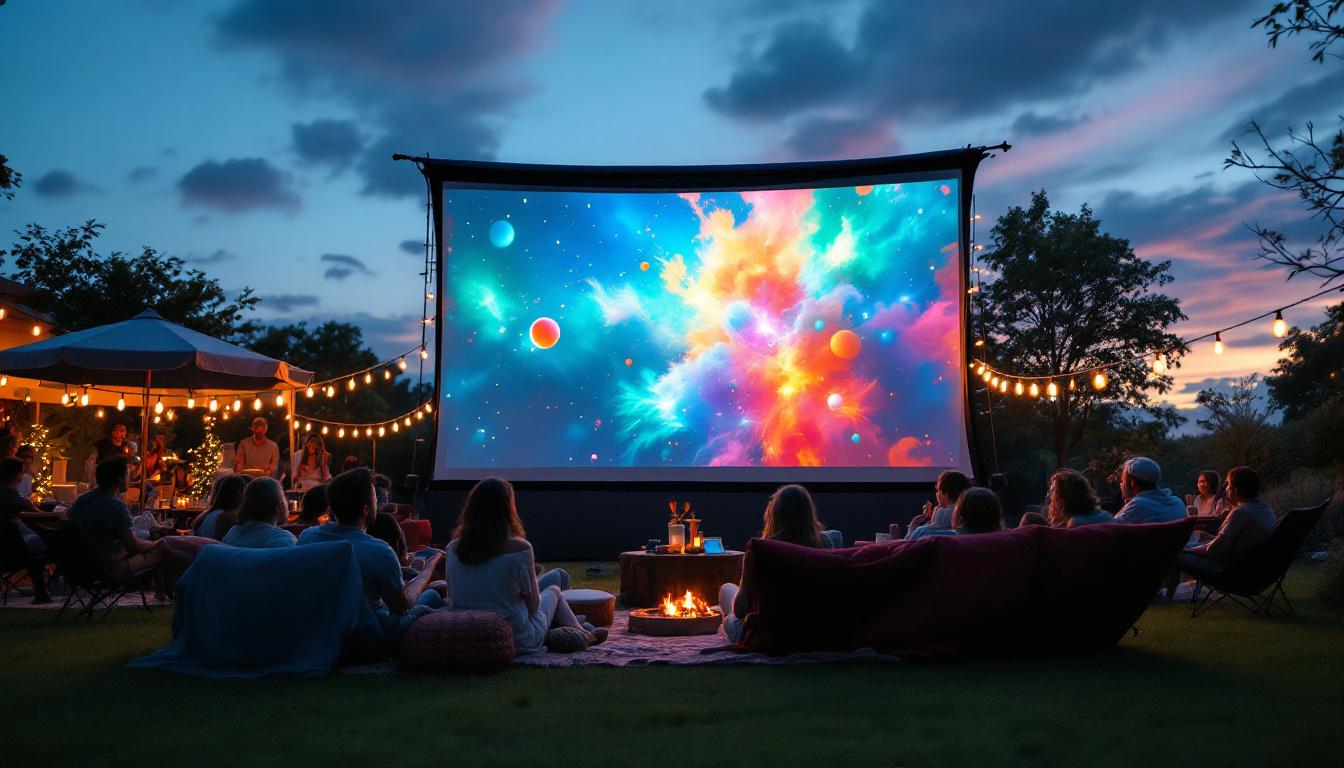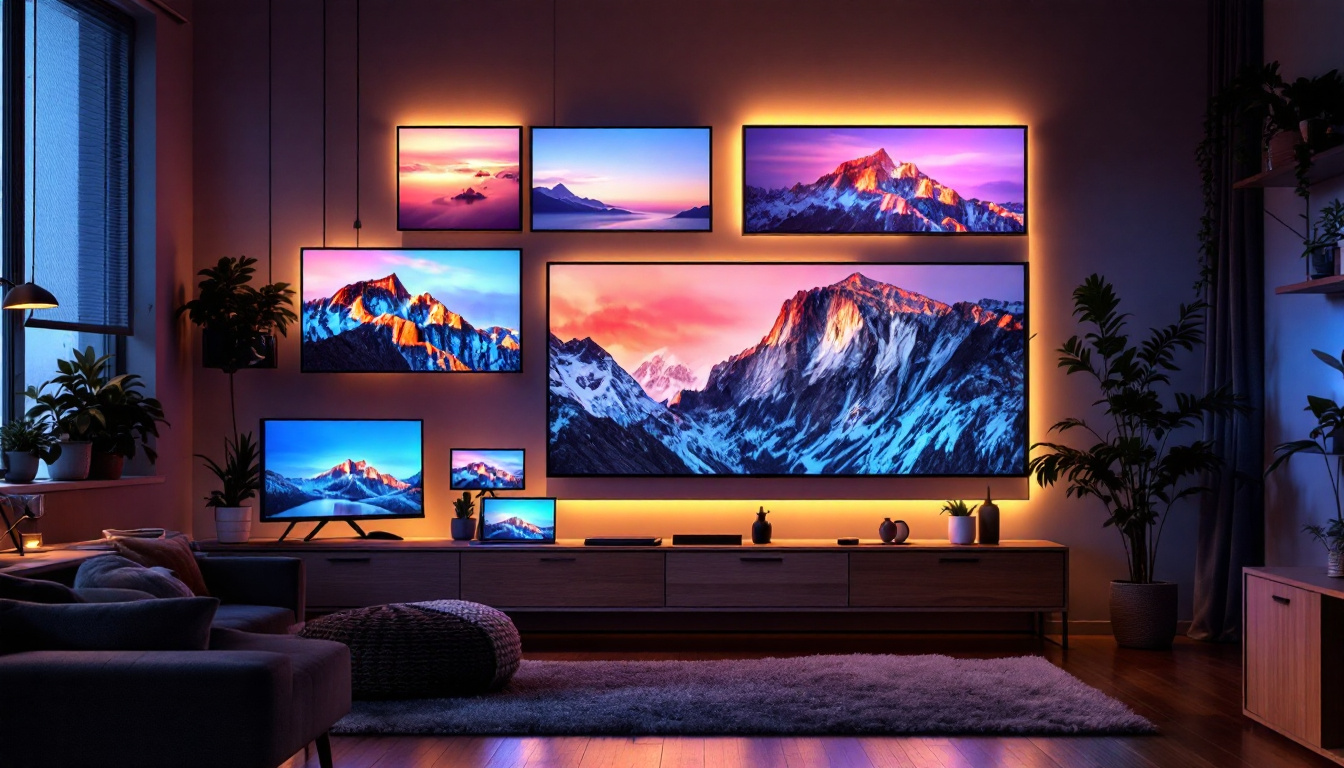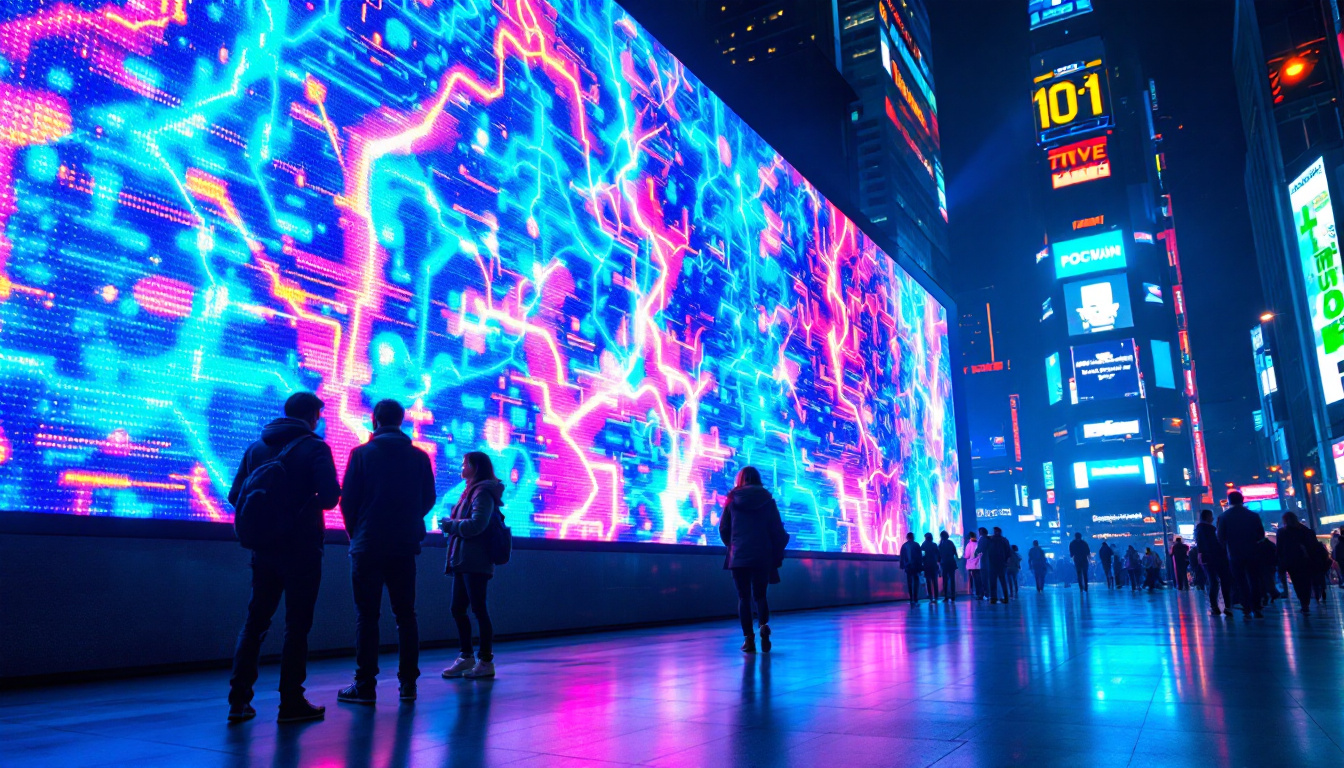In the rapidly evolving world of technology, LED displays have emerged as a cornerstone of visual communication. From smartphones to large-scale outdoor advertising, these displays have transformed how information is conveyed and consumed. This article delves into the intricacies of LED displays, focusing on their functionality, applications, and the innovative touch screen technology that enhances user interaction.
Understanding LED Technology
Light Emitting Diodes (LEDs) are semiconductor devices that emit light when an electric current passes through them. This technology has revolutionized the display industry, offering numerous advantages over traditional display technologies such as LCD and CRT. LEDs are not only more energy-efficient but also have a longer lifespan, making them a sustainable choice for both consumers and businesses. As the demand for high-quality visual experiences continues to grow, LED technology has become a cornerstone in various applications, from home entertainment systems to large-scale advertising displays.
How LED Displays Work
At the core of an LED display are thousands of tiny LED lights arranged in a grid. Each LED can emit different colors by adjusting the intensity of the red, green, and blue (RGB) components. By varying these colors and their brightness, LED displays can produce a wide range of colors and images. The precision in color mixing allows for stunning visuals that can captivate audiences, whether in a cinema, a concert, or a sports event.
When a signal is sent to the display, the LEDs light up in specific patterns to create the desired image or video. The rapid switching of these lights allows for smooth motion and vibrant visuals, making LED displays ideal for dynamic content such as videos and animations. Additionally, advancements in technology have led to the development of features like high dynamic range (HDR), which enhances the contrast and color accuracy, providing viewers with an immersive experience that was previously unattainable.
Types of LED Displays
LED displays come in various forms, each suited for different applications. The most common types include:
- Direct View LED: These displays use individual LEDs to create images and are often used in large outdoor billboards.
- LED-backlit LCD: These displays use LEDs to illuminate an LCD panel, improving brightness and color accuracy.
- Organic LED (OLED): A newer technology that allows for thinner displays with better color contrast and viewing angles.
In addition to these common types, there are also specialized LED displays such as MicroLED and MiniLED. MicroLED technology utilizes microscopic LEDs to create incredibly high-resolution displays with exceptional brightness and color fidelity, making them ideal for high-end televisions and commercial applications. MiniLED, on the other hand, enhances traditional LCD displays by using smaller LED backlights, allowing for improved local dimming and contrast ratios. As the industry continues to innovate, the versatility and performance of LED technology are expected to expand even further, paving the way for new possibilities in visual presentation.
Advantages of LED Displays
LED displays offer several advantages that make them a popular choice across various industries. Their unique properties contribute to their widespread adoption in both consumer and commercial applications.
Energy Efficiency
One of the most significant benefits of LED technology is its energy efficiency. LED displays consume less power compared to traditional display technologies, leading to lower electricity costs and a reduced carbon footprint. This efficiency is particularly advantageous for large installations, such as billboards and digital signage. Additionally, the ability to dim or adjust brightness levels further enhances energy savings, allowing businesses to optimize their power usage based on time of day or ambient light conditions.
Longevity and Durability
LED displays are known for their long lifespan, often lasting tens of thousands of hours. This durability makes them suitable for both indoor and outdoor environments, where they can withstand harsh weather conditions. The robust nature of LEDs reduces the need for frequent replacements, resulting in lower maintenance costs. Furthermore, their resistance to shock and vibration makes them ideal for dynamic settings, such as concerts or sporting events, where traditional displays might fail or degrade quickly under stress.
High Brightness and Contrast
LED displays are capable of producing bright images with high contrast ratios. This characteristic makes them ideal for use in bright environments, such as outdoor advertising or stadiums, where visibility is crucial. The vibrant colors and sharp images enhance the viewing experience, attracting more attention from passersby. Moreover, advancements in LED technology have led to the development of displays that can achieve even higher brightness levels without sacrificing energy efficiency, making them increasingly versatile for various applications, from retail displays to art installations.
Versatility in Design
Another remarkable advantage of LED displays is their versatility in design. They can be manufactured in various shapes and sizes, allowing for creative and innovative installations. This adaptability means that businesses can tailor their displays to fit specific spaces, whether it’s a large outdoor screen or a small indoor panel. Additionally, flexible LED screens can be bent or shaped to create unique visual experiences, making them perfect for modern architecture and artistic displays. This design flexibility not only enhances aesthetic appeal but also allows for more effective communication of messages, as brands can engage their audience in more dynamic ways.
Improved Viewing Angles
LED displays also offer improved viewing angles compared to traditional LCD screens. This feature ensures that images and videos remain clear and vibrant from various perspectives, making them ideal for crowded spaces where viewers may be positioned at different angles. The wide viewing angle capability is particularly beneficial in environments like shopping malls or public events, where maximizing audience engagement is essential. As a result, businesses can effectively reach a larger audience, enhancing their marketing efforts and overall visibility in competitive markets.
Touch Screen Technology
As LED displays have evolved, so too has the technology that allows users to interact with them. Touch screen technology has become increasingly integrated into LED displays, offering a more engaging and interactive experience. This evolution has transformed the way we interact with digital content, making it more intuitive and accessible for users of all ages.
How Touch Screens Work
Touch screens operate using various technologies, the most common being capacitive and resistive touch. Capacitive touch screens detect the electrical properties of the human body, allowing for multi-touch capabilities and a more responsive experience. In contrast, resistive touch screens rely on pressure applied to the screen, making them suitable for environments where gloves are worn. Additionally, advancements in touch sensing technology have led to the development of optical and infrared touch screens, which use light sensors to detect touch, further enhancing the versatility of touch screen applications.
Applications of Touch Screen LED Displays
Touch screen LED displays are utilized in various sectors, enhancing user interaction and engagement. Common applications include:
- Retail: interactive displays in stores allow customers to browse products, check prices, and access promotions. These displays can also provide personalized recommendations based on customer preferences, creating a tailored shopping experience that can drive sales and customer loyalty.
- Education: Touch screen displays in classrooms facilitate interactive learning, making lessons more engaging for students. By incorporating multimedia elements and interactive quizzes, educators can foster a more dynamic learning environment that caters to different learning styles and keeps students actively involved.
- Healthcare: In medical settings, touch screens can streamline processes, from patient check-ins to accessing medical records. They also enable healthcare professionals to visualize patient data more effectively, allowing for quicker decision-making and improved patient care.
Beyond these sectors, touch screen technology is also making waves in the hospitality industry. Hotels and restaurants are increasingly adopting touch screen kiosks for check-in and ordering, enhancing efficiency and improving customer satisfaction. Moreover, in the automotive sector, touch screens are becoming a standard feature in vehicles, allowing drivers to control navigation, entertainment, and communication systems with ease, all while minimizing distractions. This seamless integration of touch technology into everyday life underscores its importance in modern society, making interactions with technology smoother and more user-friendly.
Challenges and Considerations
While LED displays and touch screen technology offer numerous benefits, there are also challenges and considerations to keep in mind when implementing these technologies.
Cost Implications
The initial investment for LED displays, particularly large-scale installations, can be significant. Although the long-term savings on energy and maintenance can offset these costs, businesses must carefully evaluate their budgets and return on investment before committing to such technologies.
Screen Glare and Visibility
In outdoor settings, glare from sunlight can impact the visibility of LED displays. To combat this issue, manufacturers are developing anti-glare coatings and optimizing brightness levels. However, achieving the perfect balance between brightness and glare reduction remains a challenge.
Technological Advancements
The rapid pace of technological advancements in LED and touch screen technologies means that businesses must stay updated with the latest developments. Investing in outdated technology can lead to missed opportunities and reduced competitiveness in the market.
The Future of LED Displays and Touch Technology
The future of LED displays and touch technology looks promising, with ongoing innovations poised to enhance user experiences further. As technology continues to evolve, several trends are emerging that will shape the future landscape of visual displays.
Integration with Smart Technology
As smart technology becomes more prevalent, the integration of LED displays with IoT devices is expected to increase. This integration will allow for more personalized and interactive experiences, as displays can respond to user behavior and preferences in real-time.
Advancements in Display Quality
Future LED displays are likely to offer even higher resolutions and improved color accuracy, thanks to advancements in pixel technology and manufacturing processes. This enhanced quality will further elevate the viewing experience, making displays more appealing for both consumers and businesses.
Augmented and Virtual Reality
The rise of augmented reality (AR) and virtual reality (VR) technologies presents new opportunities for LED displays. As these technologies become more mainstream, LED displays will play a crucial role in delivering immersive experiences, whether in gaming, education, or training simulations.
Conclusion
LED displays and touch screen technology have transformed the way information is presented and interacted with across various sectors. Their energy efficiency, durability, and vibrant visuals make them an attractive choice for businesses and consumers alike. While challenges remain, ongoing innovations promise to enhance these technologies further, paving the way for a more interactive and engaging future.
As the landscape of visual communication continues to evolve, staying informed about the latest trends and advancements in LED displays and touch technology will be essential for anyone looking to leverage these powerful tools effectively.
Discover LumenMatrix’s Innovative LED Solutions
Ready to elevate your visual communication with the latest in LED technology? LumenMatrix is at the forefront of creating immersive and dynamic visual experiences. From Indoor and Outdoor LED Wall Displays to specialized solutions like Vehicle LED Displays and LED Sports Displays, we have a wide array of products designed to captivate your audience. Embrace the future of engagement with our All-in-One LED Displays, LED Transparent Displays, and more. Check out LumenMatrix LED Display Solutions today and transform your space into a beacon of innovation and clarity.

